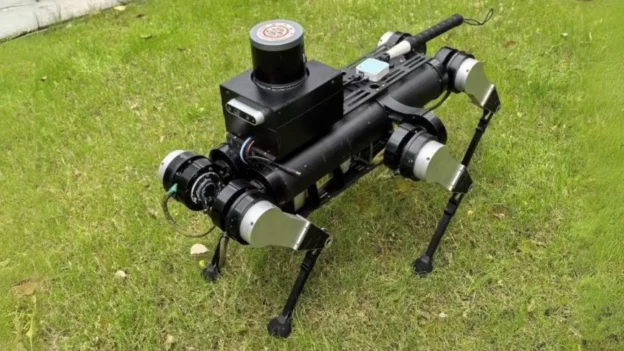A group of scientists at Jiao Tong University in Shanghai are developing a robot “guide dog” designed to assist visually impaired people. The robot is currently undergoing testing in Shanghai, using a combination of cameras and sensors to effectively move and recognize its environment. Unlike traditional guide dogs, this machine has the ability to identify road signs.
The professional assistance “guide dog” robot
This robot is equipped with advanced communication functions. It can listen and respond to a blind operator, by means of artificial intelligence, which enables it to recognize voices, plan routes and detect traffic lights. Its size is comparable to that of an English bulldog, although it is slightly wider and has six legs instead of four, which, according to the researchers, gives it greater stability and smoother movements.
The project is led by Professor Gao Feng, head of the research team of the School of Mechanical Engineering at the University. Gao explained that the six-leg configuration offers superior stability because it always keeps three legs on the ground, allowing and ensuring optimal balance.
For the tests, two visually impaired people, Li Fei and Zhu Sibin, have volunteered and are collaborating with the research team. Li, who is completely blind, and Zhu, who has limited vision, help test the robot using commands in traditional Chinese. In addition, Li mentioned that if this robot guide dog is commercialized, it could solve many of their mobility problems.
A solution for the visually impaired
The need for a robotic solution in China is especially critical due to the limited access to guide dogs. In China, there are just over 400 guide dogs for nearly 20 million blind people. In addition, the acceptance of service dogs in public and work spaces is limited.
The process of breeding and training traditional guide dogs is costly and laborious, while the production of robotic guide dogs could be scaled to an industrial level in a country like China, known for its manufacturing capabilities. Moreover, Gao compared this possibility to the mass production of automobiles, suggesting that robot dogs could become more accessible to people.
Source and photo: Shanghai Jiao Tong University.


